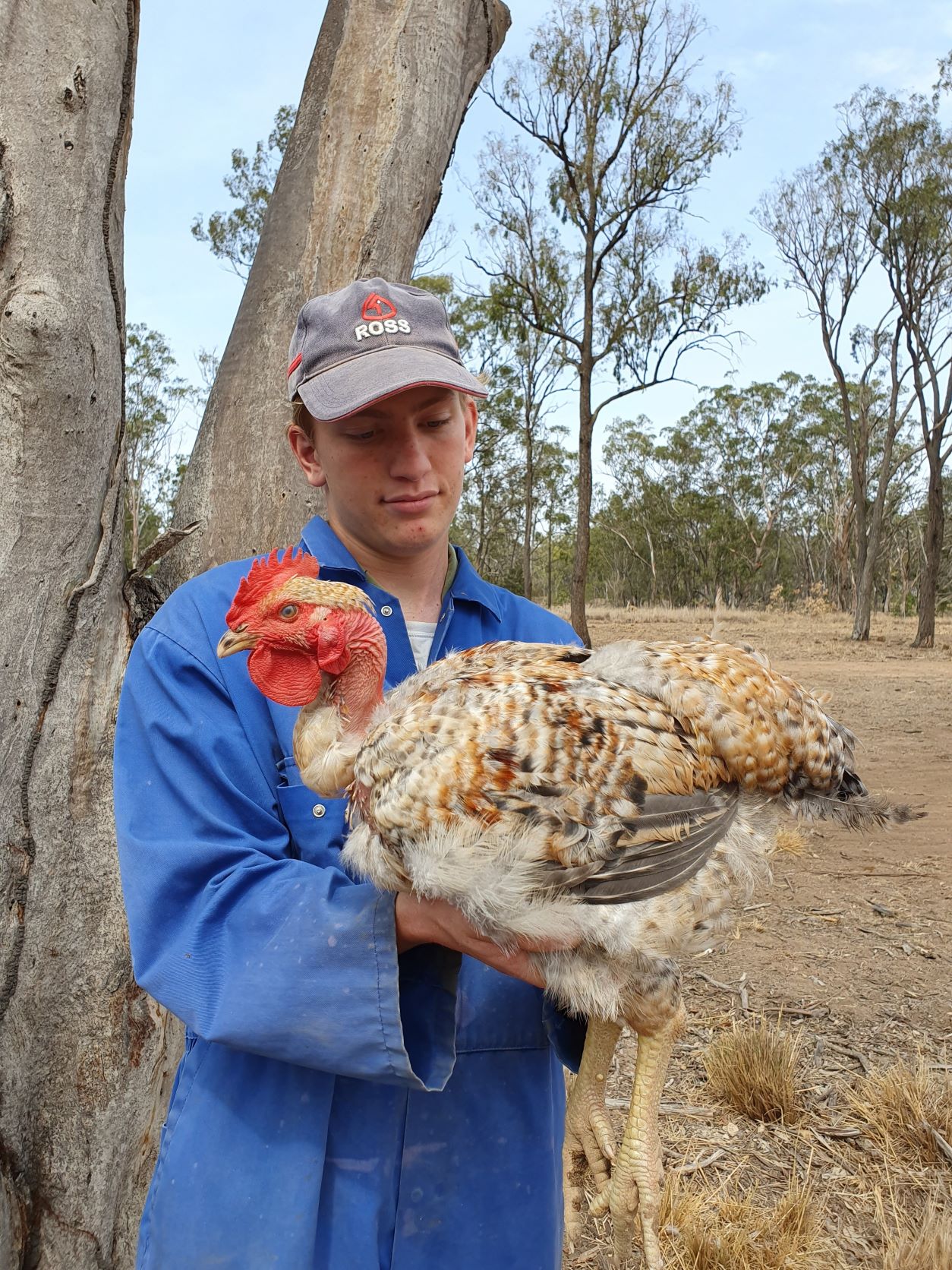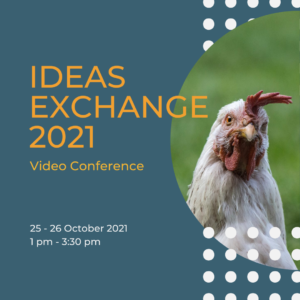Broiler farmer Michael Sommerland and Dr Kim Bunter from the animal genetics breeding unit (AGBU) are working together on the development of breeding lines intended for producing commercial offspring to be reared in predominantly outdoor broiler production. Current commercial broiler lines are not considered suitable for the intended production environment or market activities, motivating the development of customised lines.
The breeding goal of importance to Michael and his family is the objective to breed birds that will be suited to pasture rearing and/or low input village production environments, which could therefore be of benefit and market interest for other, less developed countries.
While the slaughter birds (spatchcocks 7 weeks, larger birds 11 weeks) are now being processed and are well received by customers, with many good attributes (ie long and coloured shanks, good robustness and growth), Michael believes the existing commercial birds do not yet have all of the desired carcase and meat quality attributes (ie ‘buttery’ taste, more breast meat, clean breast skin etc) of his previous birds (ie Sommerlad chickens). Altering these traits will require phenotyping and pedigree information.
Currently, birds are achieving the desired carcase weights (1.9kg) at 74 days (11 weeks) at an average liveweight of 2.8kg (67.9% dressing percentage), with minimal losses due to deformity or damage, and with no sign of disease lesions. However, the original target age at slaughter was younger, indicating that the growth rate is currently not as high as desired.
Currently, nucleus breeding replacements and commercial birds are both sourced from the same parental stock because the breeding program structure is not yet in place. Michael is replacing breeding stock (ie selection is predominantly weight and soundness based) while concurrently producing chicks to meet the commercial targets for slaughter birds (120 birds/week). While these activities can typically be combined (eg cull nucleus can be used as commercial chick parents), this is essentially a multiplication operation rather than a breeding program that will generate predictable genetic change in a range of desirable traits. Michael is well aware of this discrepancy, but has had several logistical barriers to overcome in order the get set up in preparation for a new breeding program.
Development of the new breeding program has essentially been disrupted through:
- Loss of (some of) the original parental genetic resources,
- The requirement to meet production obligations with existing stock,
- Relocation to new facilities that require significant cleanup and upgrading,
- Inability to house or record birds in their intended production environments (ie outdoors),
- Lack of routine data recording, either for monitoring or breeding program purposes, and
- Inadequate resourcing for breeding program related activities (separate to production related activities). Michael currently manages the breeding birds, the hatchery and all commercial bird production, including all husbandry, cleaning, feeding and catching and delivery of birds for slaughter. This leaves very little time for breeding program activities.
It is currently unclear whether the intended production environment (outdoor pasture-based) will become feasible. However, on the positive front, some retrieval of original stock was possible, the relocation is now complete with minimal loss of breeding stock and a high health status, facilities will be significantly improved once upgrading is complete, and data collection should be possible in future for end-product attributes.




